Welcome back to Season 10 of The Neuroscience Meets Social and Emotional Learning Podcast, where we connect the science-based evidence behind social and emotional learning (that’s finally being taught in our schools today) and emotional intelligence training (used in our modern workplaces) for improved well-being, achievement, productivity and results—using what I saw as the missing link (since we weren’t taught this when we were growing up in school), the application of practical neuroscience. I’m Andrea Samadi, an author, and an educator with a passion for learning and launched this podcast 5 years ago with the goal of bringing ALL the leading experts together (in one place) to uncover the most current research that would back up how the brain learns best, taking us ALL to new, and often unimaginable heights.
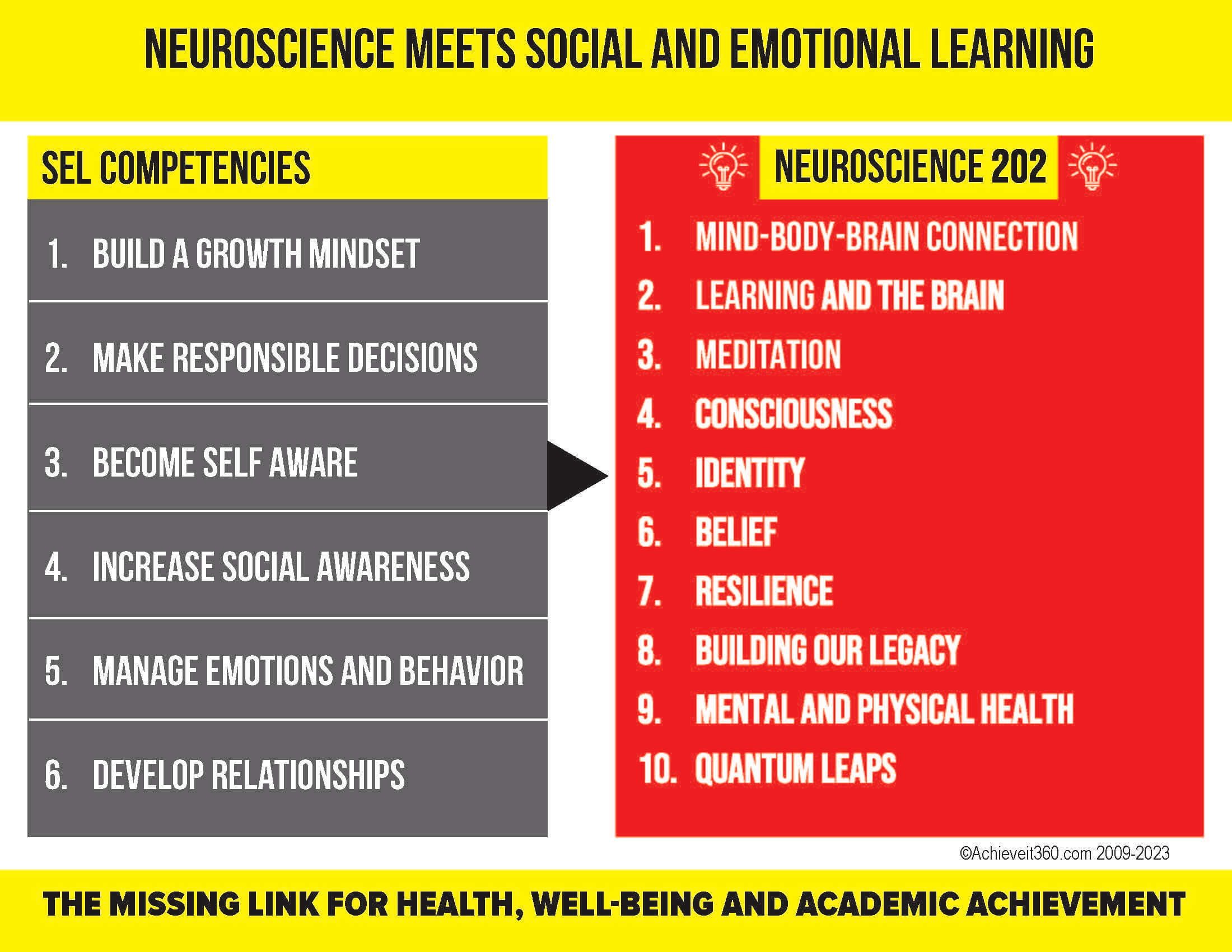
Today we’re going to go back to where we left off with EPISODE #291 “Unleashing the Power of Our Subconscious Mind” where we covered:
✔ A review of where our podcast began, and where we are going. Each episode we create, it becomes clearer to me that social and emotional skills are important for understanding who we are, and are crucial for propelling us forward. Social and emotional competencies form the backbone of who we are (our identity), along with our character, and I’d like to continue to uncover how science can strengthen this understanding, (with the topics I chosen listed in the diagram in the show notes) expanding our awareness as we move towards our goals, or whatever it is we are working on.
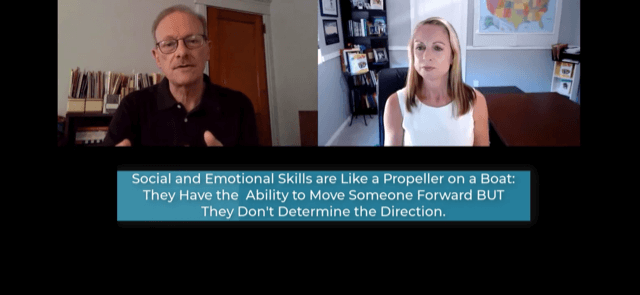

I remember professor of psychology, Maurice Elias summed it up well when he spoke about where SEL began for him in the mid 1970s. He saw a need for these SEL skills back then, (decades before they were infused into our classrooms) saying these skills “could propel someone forward” but he mentioned the importance of “character to steer our direction.” I’ve not forgotten about Character, it’s an important topic that I’ve been writing about in my spare time. We’ll cover the basic character traits in the future, showing were character fits into this equation. I know there’s a lot to the formula for success, and I don’t want to leave any stones unturned.
For today’s episode #293, we are going back to the basics, with the Fundamentals that started for me with those 12 teenagers all those years ago. When I was speaking with Brian Proctor, on our last episode, #292,[i] it hit me that some concepts we had both heard over and over again (like the hour glass that Brian put on the cover of his book that represented staying in the present moment- I had forgotten that’s what it meant. I would have told a story about it representing the fact we only have a certain amount of time to live our life, and to live each moment to the fullest) reminding me of the importance of reviewing these lessons. Or some of the phrases we used to hear over and over again like “you don’t need to know HOW you are going to do something, just figure out what it is that you want, and the how will show up.” All of the concepts that we heard, that yielded results for anyone who studied and applied them, were ideas that were simple enough to understand, yet most people never followed through with them. This is what Brian Proctor wrote about in his book, and there were many lessons he learned that went much deeper than the usual topics like goal-setting, or confidence building, but there was a foundational level that everyone started with, and I’d say it was with those Fundamental lessons that we taught to the teens.
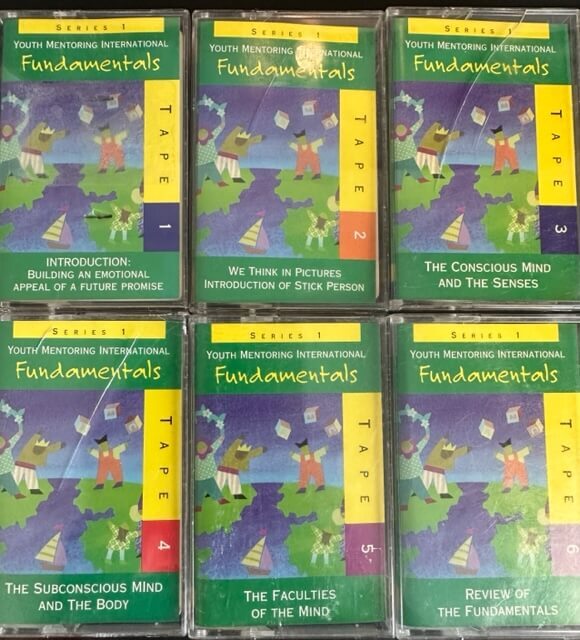
We recently covered “Diving Deeper into Our Subconscious Mind”[ii] (which was the 4th tape the teens learned). Today we will cover some of the important concepts of “Using the Conscious Mind and Our Senses” and in a couple of days (when I’ve written the next episode, we’ll cover) “Going Beyond Our Senses: Using the Faculties of Our Mind.” This will provide us all with the solid background of these success principles that I saw working for so many people over the years. I even heard from Ryan O’Neill, from EPISODE 203[iii] recently. He’s the paranormal researcher I worked with years ago, who took these ideas and used them for his family, as well as for his own results, where he skyrocketed to high levels of achievement with his work, but I would say his results were predictable. He did things a certain way.
Would you know he’s still reading the book I sent him in the mail (from Arizona to Scotland) in 2013, and tabbed 3 specific chapters, explaining the importance of reading Wallace Wattles “The Science of Getting Rich” book, chapters 4/14/7 in that order. I’ll cover this book, (that inspired Rhonda Byrnes to create the movie, The Secret) on my next deep dive at the end of the year, but if you look at Ryan’s book, from the photo is the show notes, you can tell that he actually READS it! And I don’t need to see the book to know this, as his results tell me what’s happening in his mind.
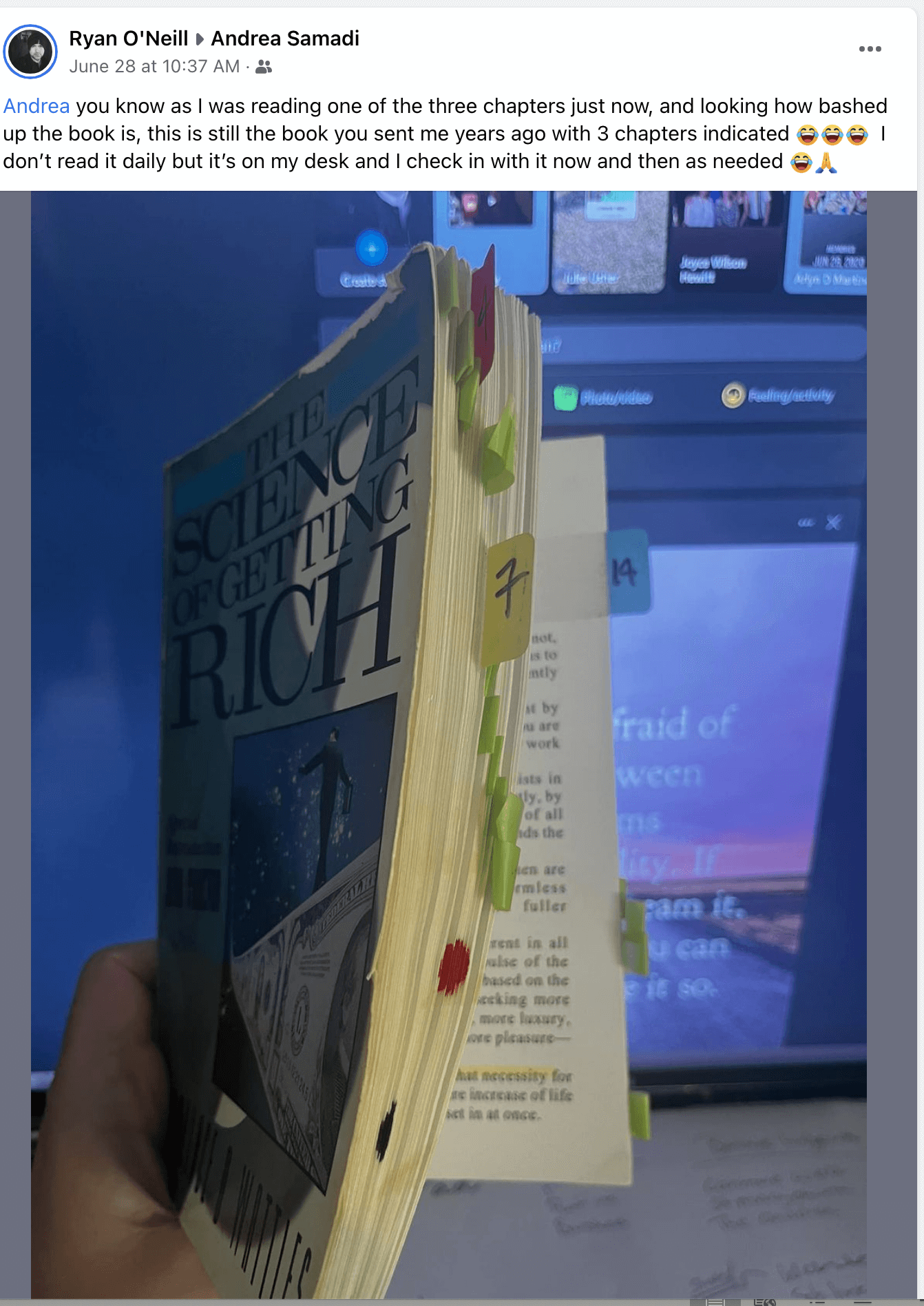
It’s all begins with this picture where you use your imagination factor to create whatever it is you want, in your mind. I didn’t cover the part where we think in pictures, because I think I’ve covered this enough on the podcast with our review of The Silva Method.[iv]
WHAT SHOULD WE UNDERSTAND ABOUT OUR CONSCIOUS MIND, so we can be sure we are using it to achieve results like Ryan O’Neill and thousands of others?
1: LEARN TO USE OUR 5 SENSES, BUT KEEP IN MIND THEY ARE LIMITED:
Imagine your mind with your conscious mind as the top part of your head, the subconscious is the bottom, and your body is below this circle. Attached to your conscious mind is your 5 senses, that you use to see, hear, smell, taste and touch the outside world with. We also have the higher faculties of the mind (our ability to reason, our intuition, perception, will, memory and imagination) that help us to go beyond our 5 senses.

Why would we want to think beyond our five senses? This is where David Eagleman’s book, The Brain, or his podcast, Inner Cosmos, ties the science to something I had heard often over the years, but the way that Eagleman describes it, completely made sense to me. He explains that our biology allows us to “see” certain wavelengths but we actually only see “a tenth of a trillionth of the light waves out there”[v] meaning there is much more than our human eyes can see. He expands this idea and dives into an explanation of how “radio waves, x-rays, gamma rays all have different frequencies, and we are completely unaware of them because our biology wasn’t designed that way.” (Inner Cosmos Podcast).
He says that “our brains are sampling just a little bit of the world” so I translated this back to what we taught those teens. We told them “don’t look at what you can see with your eyes (whether it be poor grades, sports results, money in your bank account), just be open to the fact that you can change what you see, by doing things a certain way, completely changing your results.
2: REMEMBER WE HAVE THE AMAZING ABILITY TO THINK and it’s the conscious mind that we call the thinking mind. It hit me while listening to Brian Proctor’s interview, that when his Dad was asking us “what do you really want” he wanted to see if we had the ability to answer him. Could we think new and original thoughts, or would we just look at him and say “I don’t know.” This ability to think is what will determine our results in life, and like I said with Ryan O’Neill, his ability to think made it easy to predict the results he would have in television, by the fact he is still studying, learning, reading and applying what he is learning for these new results.
It’s in our conscious mind that we have the ability to THINK new thoughts, or take ideas and IMAGINE them on the screen of our minds. But how many of us create NEW ideas? Look around you right now, and notice what others are doing. Ask them questions, and see what’s on their mind? I remember while studying the basics of Neuroscience with Mark Waldman, he would often say, “please interrupt me, and challenge things that I’m teaching you” as this would show that his students are thinking critically, and not just taking notes.
3: USE YOUR 5 SENSES TO GATHER INFORMATION, AND THEN GET CREATIVE taking your thoughts or ideas to a new level, using your 6 higher faculties. Imagine an idea coming into your mind. You can sense the idea, and then think about it. Do you like the idea? Does it make sense to you? You have the ability to reject an idea (using your reasoning faculty), but if you like the idea, and you accept it, maybe you even love this idea, you now send it over to your subconscious mind, that we went deep into on EP 291[vi]. This is the creative process where you take an idea (a thought), spend some time in thought about it, decide you like the idea, and with emotion, you turn it over to your subconscious mind where the magic begins.
This is how Proctor taught the teens to turn their C grades into A grades (by teaching them to see an A grade with their imagination FIRST). Once they could see the new grade, they started taking the actions needed to actually earn this A grade, but it started with their ability to put this conscious idea in their mind first. They had to THINK!
We heard so many stories like this over the years, especially in sports. A golfer described how he would picture the golf ball going into the cup in his imagination first, and evening hearing it spinning around.
PUTTING OUR UNDERSTANDING OF THE CONSCIOUS MIND INTO PRACTICE:
Take out a notepad and sketch out the diagram of the conscious mind, subconscious mind and the body (that was created by Dr. Thurman Fleet in 1934).
Here’s my sketch below.
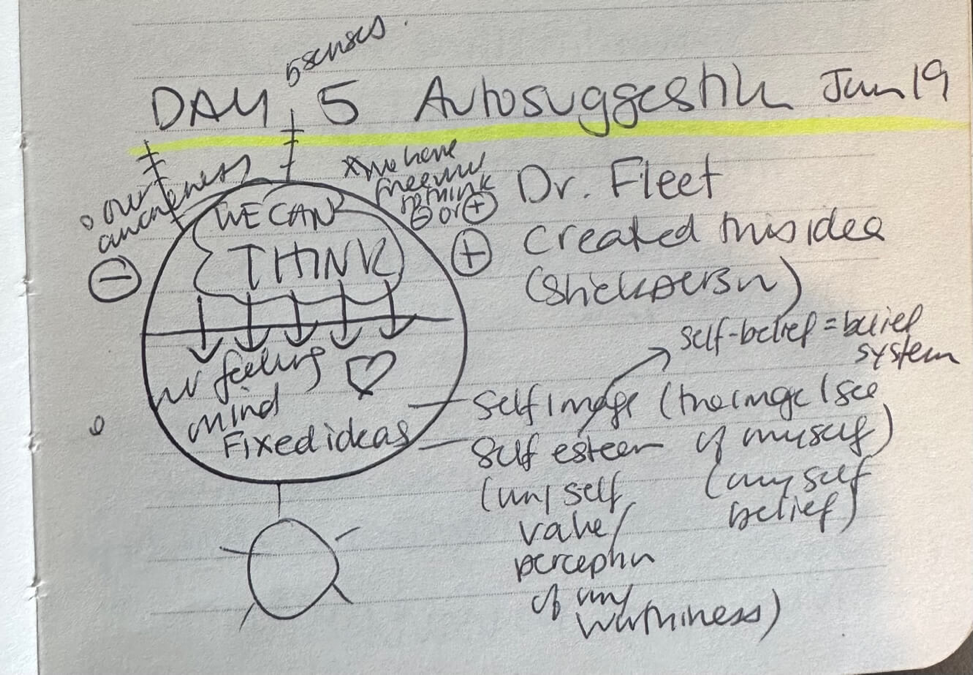
Now start to THINK. What do you really want?
Write out YOUR IDEA, circle it, and if you resonate with what you have written, add emotion to it, and see what comes to mind when you READ what you’ve written.
If it’s a goal that stretches you, like we’ve mentioned before, you might read it and think “this is too far off from where I am right now” but it’s here we will take the higher faculties of the mind (next episode) to help change this discord. But for now, just notice how you feel. Use your conscious mind to either accept the new idea, or reject it.
When I first wrote on my notepad that I wanted to make neuroscience simple for educators and students, I remember almost wanting to hide my notebook, and not tell anyone this is what I wanted to do. It just seemed so far off from where I was, and I wasn’t sure how I would ever do this.
Now, I receive emails from leaders around the world, looking to see how they can add simple neuroscience into their curriculum. It just boggles my mind that it started with writing out an idea, and then taking action on the idea, until finally, one day, you look up, and you are living what you wrote.
To review and close out this episode on “Using the Conscious Mind and the 5 Senses” we covered:
✔ 3 concepts about our conscious mind and our senses to help us to THINK.
✔ An activity encouraging us to write out something we REALLY want, and see how we feel about this NEW goal or idea.
This will prepare us for our next episode, where we will then look at the 6 faculties of our mind (our reason, intuition, perception, our will, memory and imagination) to help us to see beyond our senses.
I hope this lesson has helped you to see some of the fundamentals that I’ve seen take people to incredible heights. Brian Proctor outlined some other lessons learned on our last interview, and I wasn’t surprised at the reaction to his episode. I always love hearing how these episodes are helping you, and Brian’s interview was one I’ll never forget.

I’ll see you in a few days for a look into the faculties of our mind, and will close with a quote reminding us to THINK. If you don’t like what you see in your world, (whether you’re a student, and want to change your grades, or an athlete or a salesperson who wants to change their results, it all begins with the conscious mind, and our ability to THINK, and CREATE the results we really want in our life.
FOLLOW ANDREA SAMADI:
YouTube Channel: https://www.youtube.com/c/AndreaSamadi
Website https://www.achieveit360.com/
LinkedIn: https://www.linkedin.com/in/samadi/
Facebook: https://www.facebook.com/Achieveit360com
Neuroscience Meets SEL Facebook Group https://www.facebook.com/groups/2975814899101697
Twitter: https://twitter.com/andreasamadi
Instagram: https://www.instagram.com/andreasamadi/
REFERENCES:
[i] Neuroscience Meets Social and Emotional Learning Podcast EPISODE #292 https://andreasamadi.podbean.com/e/brain-proctor-on-my-father-knew-the-secretgrowing-up-with-bob-proctor/
[ii] Neuroscience Meets Social and Emotional Learning Podcast EPISODE #291 https://andreasamadi.podbean.com/e/brain-fact-friday-on-unleashing-the-power-of-our-subconscious-mind/
[iii] Neuroscience Meets Social and Emotional Learning Podcast EPISODE #203 https://andreasamadi.podbean.com/e/case-study-with-paranormal-researcher-ryan-o-neill-on-making-your-vision-a-reality/
[iv]Neuroscience Meets Social and Emotional Learning Podcast EPISODE #261 https://andreasamadi.podbean.com/e/a-deep-dive-with-andrea-samadi-into-applying-the-silva-method-for-improved-intuition-creativity-and-focus-part-1/
[v] David Eagleman Inner Cosmos Podcast “Can We Create New Senses for Humans?” https://podcasts.apple.com/us/podcast/can-we-create-new-senses-for-humans/id1677842672?i=1000616626191
[vi] Neuroscience Meets Social and Emotional Learning Podcast EPISODE #291 https://andreasamadi.podbean.com/e/brain-fact-friday-on-unleashing-the-power-of-our-subconscious-mind/
No comments yet. Be the first to say something!